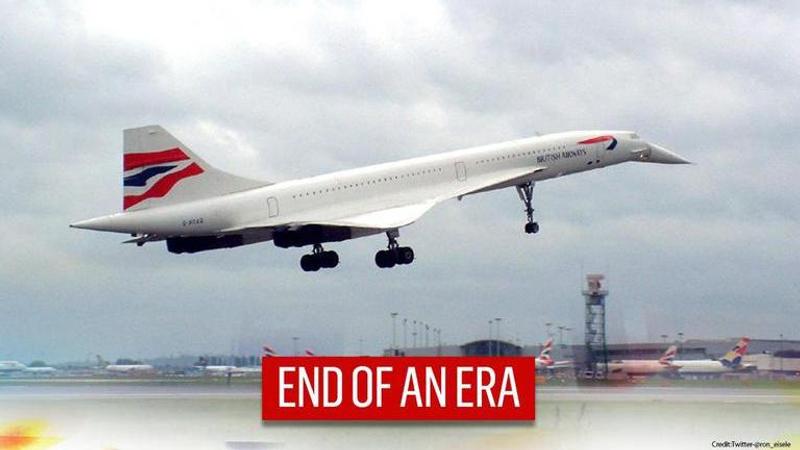Published 12:45 IST, October 25th 2020
This day in History: Concorde retires its last commercial supersonic flight in 2003
On this day in history, BA operated its last commercial Concorde flight from JFK International Airport to Heathrow. It was the last supersonic flight flown.

Advertisement
On October 24, 2003, an era of supersonic commercial air travel came to an abrupt end as British Airways operated its last commercial Concorde service. The British Airways plane, the skinny, needle-nosed 20th-century icon of international jet-setters, departed from John F. Kennedy International Airport on its final flight home.
The Concorde was a joint project of the British and French governments that began commercial service back in January 1976. The technological wonder flew 11 miles above the Earth at up to 1,350 mph, crossing the Atlantic in about 3 1/2 hours. With the five-hour time difference, passengers arrived in New York earlier than they had left London.
Recounting the fate of supersonic flights, Tesla and SpaceX founder Elon Musk, suggested that there should be a new supersonic jet, this time electric
Sigh … there should be a new supersonic jet, this time electric
— Elon Musk (@elonmusk) October 25, 2020
Why did Concorde stop flying?
British Airways cited rising operating costs and reduced ticket sales. Although advanced when it was launched, 30 years on the planes were outdated and expensive to run. Following an Air France Concorde crash from Paris in July 2000 that killed all 109 people on board and four on the ground, the passenger numbers fell. The plane ran over a piece of metal on the runway, bursting a tyre which caused the fuel tank to ignite as it was taking off.
It is also said that the 9/11 attacks in 2001 also had a severe impact on the number of people choosing to fly. By the time Concorde was retired, it was the only aircraft in the British Airways fleet that required a flight engineer.
However, the allure of the Concorde was so impactful that when the airlines auctioned off spare parts from their fleets, many items sold for significantly more than their suggested price. As per international media, a blanket valued at $100 sold for $2,000, a door sold for $33,000, and a needle nose sold for $550,000.
Future of supersonic flight?
Back in 2016, Sir Richard Branson announced plans to launch a new supersonic passenger jet dubbed Concorde II, which assured travel time of just three-and-a-half hours from London to New York. Branson was working with American startup Boom to develop the XB-1 supersonic aircraft, set to be the 'fastest civil aircraft ever made'.
Later in September 2017 US space agency Nasa and aircraft manufacturer Lockheed Martin revealed they have ploughed £290million into developing the QueSST jet, which could fly across the Atlantic in three hours and be much quieter than Concorde. It is thought test flights could begin as early as 2021.
Updated 12:45 IST, October 25th 2020




